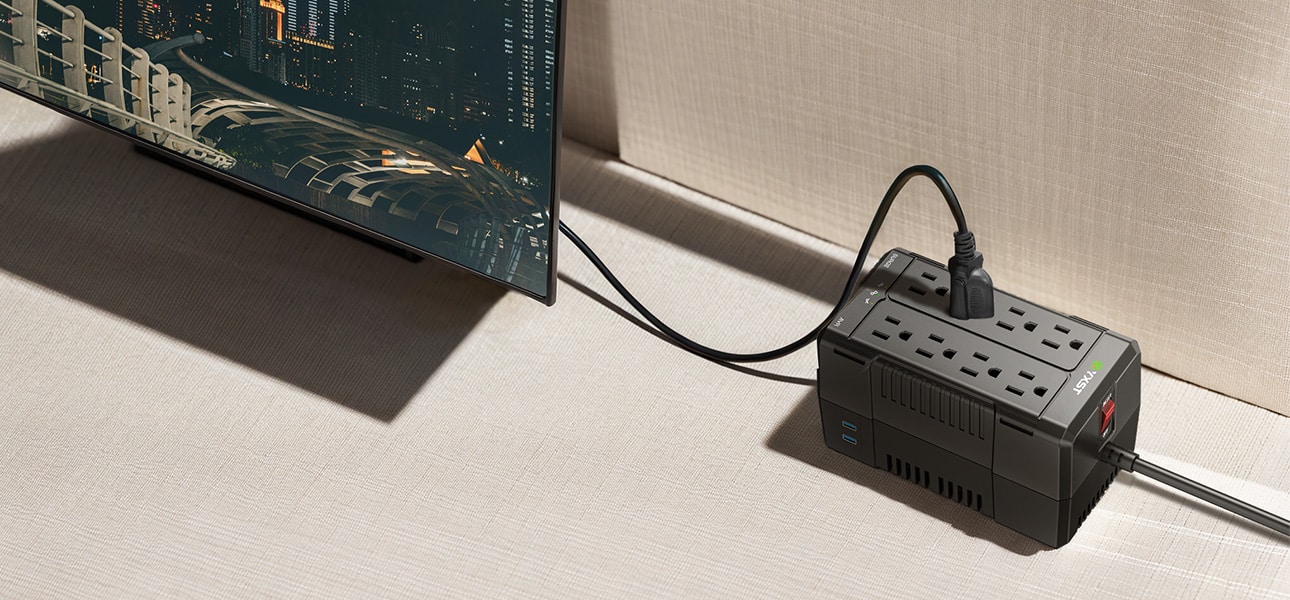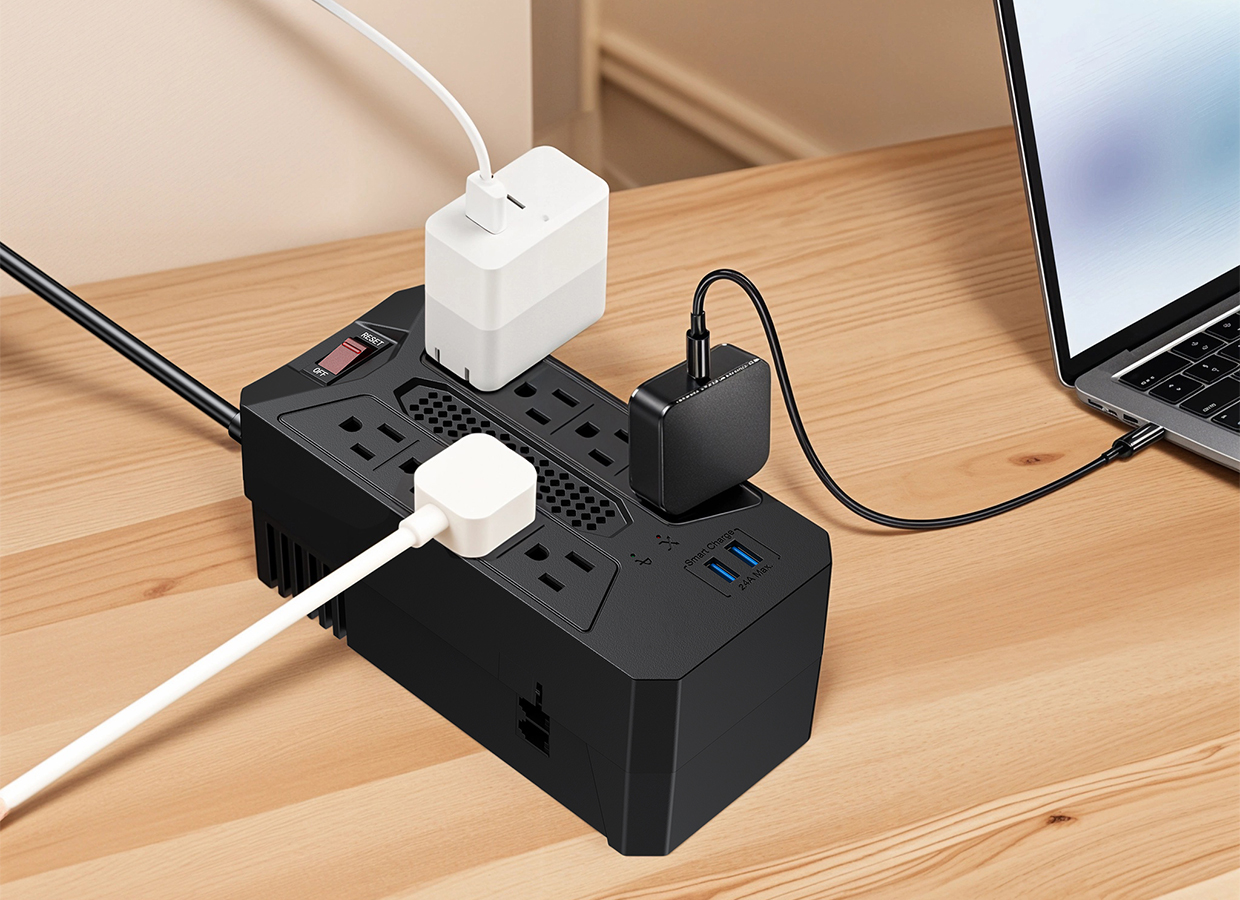Importance of voltage regulator in Home Appliance Protection
Date:2025-05-12 Click:951
Automatic Voltage Regulator: The "Guardian" of Your Home Appliances
A voltage regulator (also known as an automatic safety voltage regulator) is a static device that detects input voltage fluctuations and produces a stable output voltage range through internal adjustments. When the voltage regulator detects that the voltage is too high, it stabilizes the voltage and reduces it to the optimal range for the connected appliance; if the voltage is too low, the voltage regulator increases the voltage until it reaches the optimal range. This automatic adjustment function makes the voltage regulator a "protective wall" between the appliance and the input current, ensuring that the optimal amount of power is continuously supplied to the appliance.
The working principle of the voltage regulator is based on a sophisticated electronic regulation system. It consists of a voltage regulator circuit, a control circuit and a servo motor. When the input voltage or load changes, the control circuit will sample, compare and amplify, and then drive the servo motor to rotate, thereby changing the position of the voltage regulator carbon brush and automatically adjusting the coil turns ratio to keep the output voltage stable. For large-capacity voltage regulators, the voltage compensation principle is also used to further optimize performance.
Why does every home need a quality voltage regulator?
The damage caused by unstable voltage to home appliances is often gradual and irreversible. Here are five key reasons to invest in a quality home voltage regulator:
1. Comprehensive protection of appliances: Prevent damage or malfunction caused by unstable voltage, especially for delicate electronic products such as TVs and computers.
2. Extend service life: By maintaining a stable and optimal energy flow, the service life of appliances can be significantly extended. Studies have shown that appliances operating under stable voltage can last more than 30% longer.
3. Cost-effective: A one-time investment can save the trouble and cost of multiple repairs or re-purchases of appliances, which is more economical in the long run.
4. Safety guarantee: Protecting the family from electrical accidents such as short circuits is crucial, especially for the safety of children and the elderly.
5. Energy saving and consumption reduction: A quality voltage regulator can improve energy efficiency, reduce energy waste caused by unstable voltage, and save electricity bills in the long run.
Key criteria to consider when purchasing a household voltage regulator (stabilizer)
1. Power demand and reserve
- Total power calculation: Add the rated power of all appliances that need voltage stabilization and reserve a margin of 30%-50%. For example, if the total power of household appliances is 2000W, it is recommended to choose a stabilizer of more than 3000W to cope with the starting current (such as the instantaneous current of inductive loads such as air conditioners and refrigerators can reach 3-5 times the rated power).
- Inductive load processing: Motor equipment (such as air conditioners and washing machines) needs to be multiplied by 3 times to calculate the power to avoid damage to the stabilizer due to starting shock.
2. Voltage range and stability
- Input voltage range: Select according to local voltage fluctuations. If the voltage is often lower than 160V or higher than 250V, it is necessary to choose a stabilizer with a wide input range (such as 140V-270V), otherwise, it may not work properly.
- Output voltage accuracy: High-precision (within ±2%) voltage regulators are more suitable for sensitive equipment (such as computers, and medical instruments), and ±5% accuracy is acceptable for ordinary household appliances.
3. Type and performance
- Automatic voltage regulator: The mainstream choice, divided into servo motor type (no instantaneous power failure, high accuracy) and relay type (low price but switching sparks). The former is suitable for high-end appliances, and the latter is suitable for general household appliances.
- Contactless voltage regulator: It uses electronic components for adjustment, has fast response, no sparks, long life but a high price.
4. Protection function and safety
- Essential functions: overvoltage/undervoltage protection, overload protection, delayed start (to prevent surge damage to electrical appliances).
- Heat dissipation design: Ensure good ventilation to avoid performance degradation or failure caused by a high-temperature environment.
5. Brand and after-sales
- Give priority to well-known brands (such as Yixing Electronic Technology, sollatech, etc.), with reliable quality and perfect after-sales service, and some products provide more than many years of warranty.
- Pay attention to product certification (such as CE, ISO9001) and user reviews to avoid low-priced and low-quality products.
6. Installation and environmental adaptation
- Installation method: Choose wall-mounted, floor-standing, etc. according to the space to ensure sufficient heat dissipation space.
- Expansion capacity: reserve the power demand of new appliances in the future, and the load rate is recommended to be controlled within 80%.
Example purchase process:
1. Evaluate the needs: measure the voltage fluctuation range of the home and list the power of the appliances to be protected.
2. Calculate the power: total power × 3 (× 5 for more inductive loads).
3. Select the type: choose servo motor type for sensitive equipment and relay type for a limited budget.
4. Verify parameters: confirm that the input range covers the local voltage and the output accuracy meets the requirements.
5. Installation and debugging: install correctly according to the instructions and avoid confined spaces.
The above criteria can effectively avoid equipment damage or voltage regulator overload problems caused by improper selection. If the voltage is stable for a long time, a voltage regulator may not be required.
high-quality household voltage regulator should have the following key protection functions
- Overload protection: Automatic power off to prevent equipment damage- Delay protection: Essential for compressor equipment such as refrigerators and air conditioners (5-8 minutes delay is recommended)
- Surge protection: Protection against instantaneous high voltage such as lightning strikes
- Short circuit protection: Prevent chain damage caused by circuit short circuit
Preferred automatic voltage regulation type
There are two main types of voltage regulators on the market:- Manual voltage regulator: Low price but inconvenient to operate, has been gradually eliminated
- Automatic voltage regulator: The mainstream of the market, divided into:
- Pole-type automatic voltage regulator: Uses servo motor control, no instantaneous power off, high accuracy (3-5%), suitable for high-precision equipment such as computers
- Relay type automatic voltage regulator: Switched by relay, moderately priced but low accuracy, suitable for general household appliances
Professional advice: Choose products with an automatic voltage regulation function, although the price is slightly higher, it is far lower than the economic loss caused by electrical appliance damage.
Installation and use environment requirements
Proper installation and use can greatly extend the life of the voltage regulator:
- Place in a ventilated, dry place without direct sunlight
- Leave at least 10cm of heat dissipation space around
- Avoid humid and dusty environments
- Turn on the voltage regulator first, then connect the electrical appliances; the order is reversed when shutting down
- Avoid frequent switching (the interval should be greater than 10 seconds)
Five key points for the use and maintenance of voltage regulators
1. Regular inspection: Check whether the input and output voltages are normal every month
2. Cleaning and maintenance: Clean the internal dust every quarter (professional operation is required)
3. Load management: Avoid long-term full-load operation (recommended load rate ≤90%)
4. Line inspection: Ensure that the input and output lines are firmly connected to avoid heating
5. Timely replacement: If abnormal noise or performance degradation is found, it should be repaired or replaced in time
Special attention: The fuse of the voltage regulator must be used according to the specifications and must not be replaced at will, otherwise it may cause serious damage.
FAQ
Q1: How do I tell if my home needs a voltage regulator?
A: If you often experience flickering lights, appliance restarts, or unstable performance, it is recommended to use a multimeter to measure voltage fluctuations. When the voltage exceeds the 200V-240V range or fluctuates frequently, a voltage regulator is needed.
Q2: Will a voltage regulator increase electricity bills?
A: High-quality voltage regulators are usually more than 95% efficient and consume very little energy. On the contrary, by optimizing the voltage, you can also reduce the ineffective power consumption of appliances at low voltages, which may save electricity bills in the long run.
Q3: Can a voltage regulator protect all the appliances in the house?
A: Yes, but you need to choose a voltage regulator with sufficient capacity for the whole house, and consider the total power and starting current of all appliances. A more reliable solution is to configure a voltage regulator for key appliances separately.
Q4: What is the difference between a voltage regulator and a UPS?
A: A voltage regulator only regulates voltage, while a UPS (uninterruptible power supply) also provides backup power after a power outage. For areas with frequent power outages, it is recommended to use both together.
Q5: How long is the service life of a voltage regulator?
A: A high-quality voltage regulator can last up to 8-10 years under normal use. Regular maintenance and avoiding overload can significantly extend the service life.
Conclusion: Smart Choice, Safe Protection
Choosing the right voltage regulator for your home is an important decision that affects the safety of your appliances and the stability of your home's electricity use. By understanding how voltage regulators work, evaluating your home's actual needs, and following a professional guide to buying, you will be able to find the best voltage protection solution. Remember, a reasonable investment in a voltage regulator will save you potentially expensive repair or replacement costs and protect your cherished electrical equipment for many years.The voltage regulator products provided by Yixing Electronic Technology have become the first choice for many families due to their excellent performance and reliable after-sales service. Whether you live in a rural area with frequent voltage fluctuations or a city with a relatively stable power supply, a suitable voltage regulator will provide a solid guarantee for your home electricity use, allowing you to enjoy the convenient life brought by modern electrical appliances without any worries.




